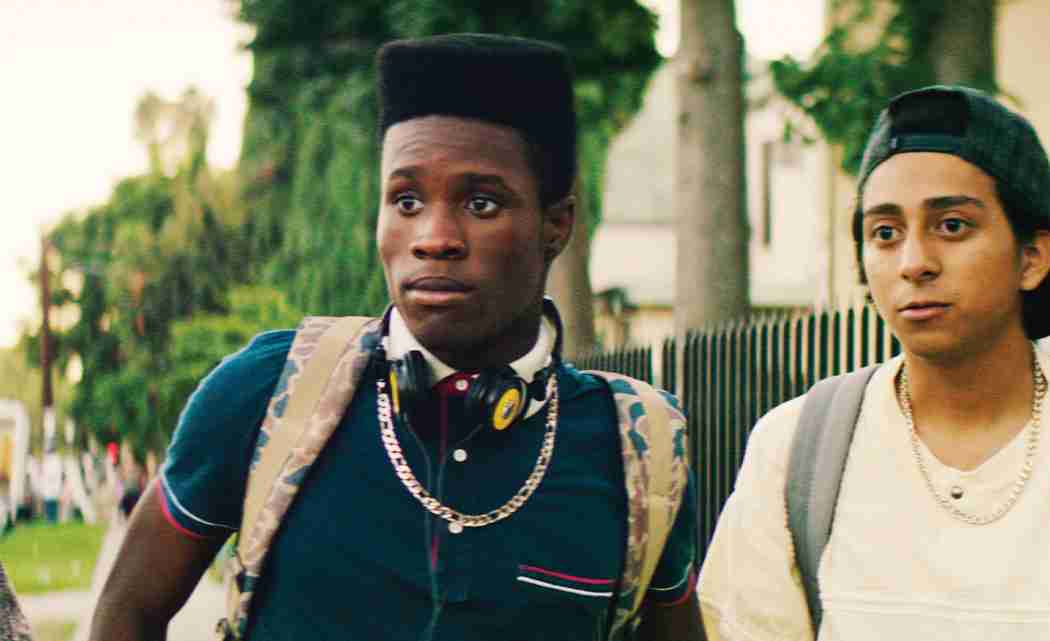Can a sistah get real for a second?
Now, we all know that everyone and their uncle is riding the Dope train. It’s that seminal movie of the year that harkens back to the black films of the 1990s, like Boyz N The Hood and The Wood, which captured the social climate of the time. Yet somehow, Dope updates itself with iPhones and the latest drug of choice: Molly. So much praise from the Sundance to Cannes Film Festivals has gone forward about this film. So, naturally, South Florida Times being a black owned and patronized newspaper would catch the train with everyone else.
In Dope (written and directed by Rick Famuyiwa and produced by Forest Whitaker, Sean “P. Diddy” Combs, and Pharrell Williams) three friends practically ruin their chances of getting into college after a fateful night at a drug dealer’s party that goes terribly wrong. Now, our protagonist, Malcolm (played by Shameik Moore) is running all over Inglewood to get rid of $100,000 worth of Molly. In true cinematic form, Malcolm and his friends, Diggy (Kiersey Clemons) and Jib (Tony Revolori) stick together.
In his career as a writer and director, Famuyiwa has gifted us with The Wood, Brown Sugar, and Our Family Wedding. It’s easy to see that Famuyiwa is trying to pay homage to the Southern California-set films of the 1990s and the nostalgia of that period.
Malcolm sports a fade that is highly distracting and dresses like he just stepped out of 1994. Famuyiwa cast Zoe Kravitz, who happens to be Lisa Bonet’s daughter with Lenny Kravitz and her Mini Me, as the main love interest to remind us of a time when A Different World was the HBCU television series that defined a generation. He also cast The Wood’s De’Aundre Bonds to reprise his role as Stacey, the school security guard. Many of you will remember Bonds played Alicia’s crazy older brother. Lastly, Malcolm, who has
aspirations of going to Harvard University, has a good chance of actually getting into college. But, life and the drug game in Inglewood threaten his chances of getting out of the hood.
Sound familiar? Boyz changed the way the film industry looked at black films and it was highly indicative of the time. It also was John Singleton’s breakout movie, which catapulted him to be a highly sought director. The same goes for Dope, Famuyiwa, and Moore. But, Boyz had something that Dope seems to be missing. For one thing, Boyz is an instant classic. However, Dope, which is well-written and well-edited (thanks to Lee Haugen) is the kind of film you only watch one time to get the full breadth of it and then you move on to something else. There’s no staying power or resonance in Dope that makes its audience talk about real social issues.
Dope is vulgar and crass and gets its audience’s attention with shock value. The three main characters are bold. They strike a chord for a quick second before the urge to wash all of their mouths out with soap and water overrides the shock. With Boyz there was a message behind the story that really gripped its audience; and still does today. However, Dope doesn’t seem to take itself seriously; its only message is that we shouldn’t judge people by where they come from. We in the black community know that already.
Overall, Dope is still a good movie for adults and is indicative of the times we live in today. Don’t expect anything that’s going to compel you to start a movement. It’s one boy’s story about becoming a man on the streets of Los Angeles. It gives the audience a look at what drives the young people of today. Apparently, it’s the same things that drove young people back in the 1990s: sex, drugs, friendships, and college applications.












No Comment